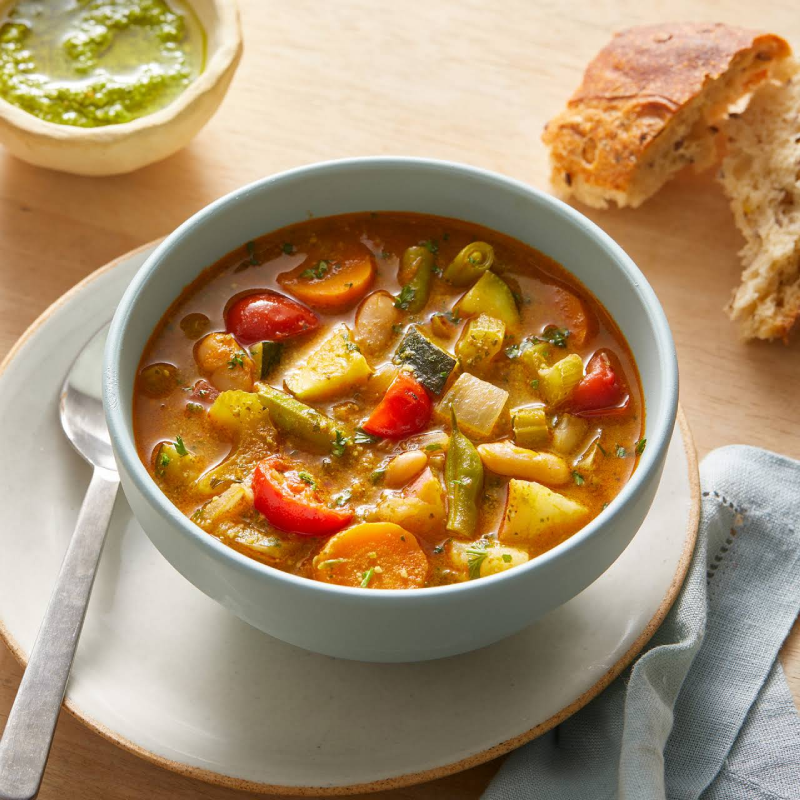
7 secrets to making healthy homemade soup
During the cold winter months, a thick and hearty soup can really hit the spot for lunch, dinner or snack. Not only is it a great way to give your family a serving of vegetables and whole grains, but it will fill them up without packing on a ton of calories. Of course, that depends on what kind of soup you choose!
Sometimes, the salt content can be excessively high in prepared soups from restaurants or supermarkets.
Cream-based soups – usually made with heavy cream, half and half or whole milk – are high in saturated fat, sodium and calories.
If you’re ordering at a restaurant, your best bet is to go for tomato or chicken based. When you’re looking at the label of canned soup, don’t just look at the calories; check out the saturated fat, sodium content and serving size before determining the best choice.
But what about making your soup at home? Cooking homemade soup gets the “gold star” – not only do YOU control what goes in it, but you can make a large pot and have extra servings for the week.
Here are 7 tips for making a healthy homemade soup:
Low-sodium base
Start with a low-sodium vegetable or chicken base: Starting with a low-sodium base helps to control the salt content of the soup, making it a healthier option for your family. You can use a store-bought base or make your own by boiling vegetables or chicken bones to create a flavorful broth.
Add veggies
Add an assortment of fresh or frozen vegetables that your family likes: Adding vegetables not only adds flavor and texture to the soup, but it also increases its nutritional value. Try using a variety of vegetables such as carrots, celery, onions, spinach, kale, zucchini, and bell peppers. You can also use frozen vegetables for convenience.
Lean protein
Throw in some lean protein like white meat, chicken or turkey: Adding lean protein such as chicken or turkey not only adds flavor to the soup, but it also helps to keep you feeling full and satisfied. You can use leftover cooked chicken or turkey or cook it in the soup.
Grains
Add quinoa, farro, barley or whole grain pasta for a splash of whole grain: Adding whole grains to the soup not only adds texture and flavor, but it also adds nutritional value.
Whole grains such as quinoa, farro, barley, or whole grain pasta are great options. These grains are rich in fiber and protein, which can help keep you feeling full and satisfied.
Incorporate legumes
Add legumes, beans, peas or corn for added fiber and great texture: Legumes, beans, peas, or corn are great additions to your healthy soup as they provide fiber, protein, and a great texture.
You can use canned or cooked beans, peas, or corn. Lentils are also a great option as they cook quickly and add a great texture to the soup.
So there you have it, folks!
With these 7 secrets up your sleeve, you’ll be well on your way to becoming a soup-making pro. Who needs canned soup when you can create your own healthy and delicious concoctions?
So grab your ladle and get cooking, because there’s nothing quite like a homemade soup to warm your soul and fill your belly.
Remember, the best part about making soup at home is that you can always sneak in a few extra ingredients – just don’t tell your picky eaters! 😉








